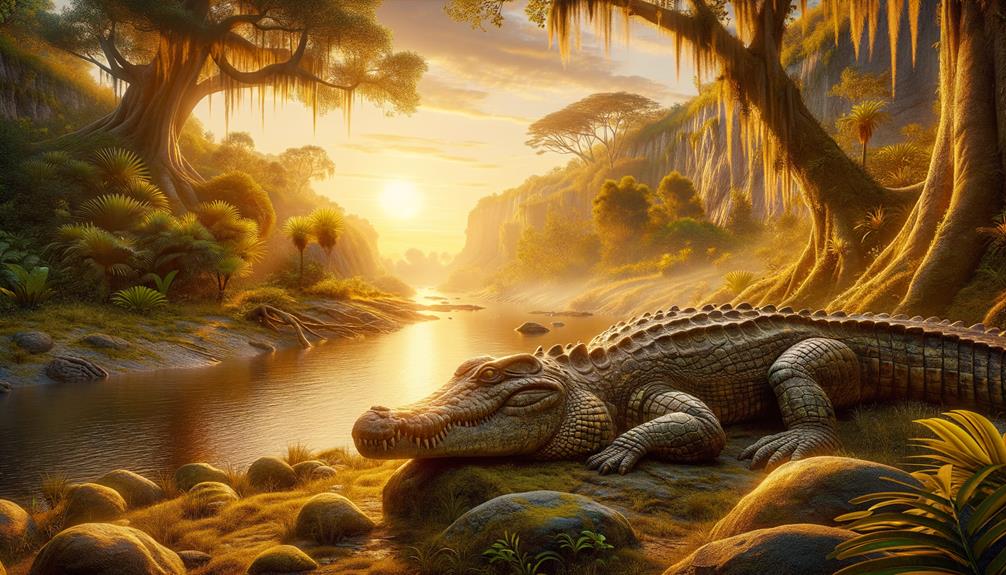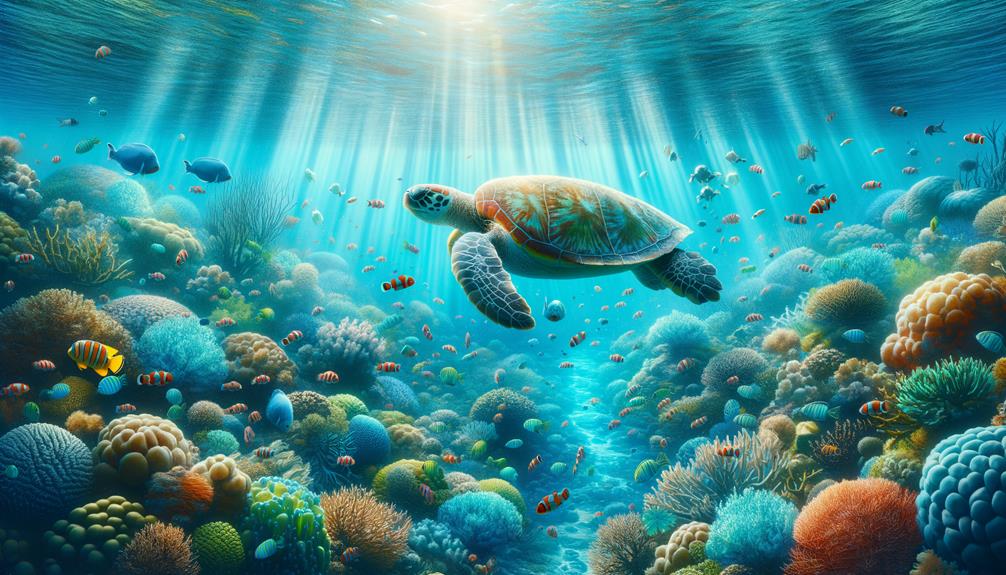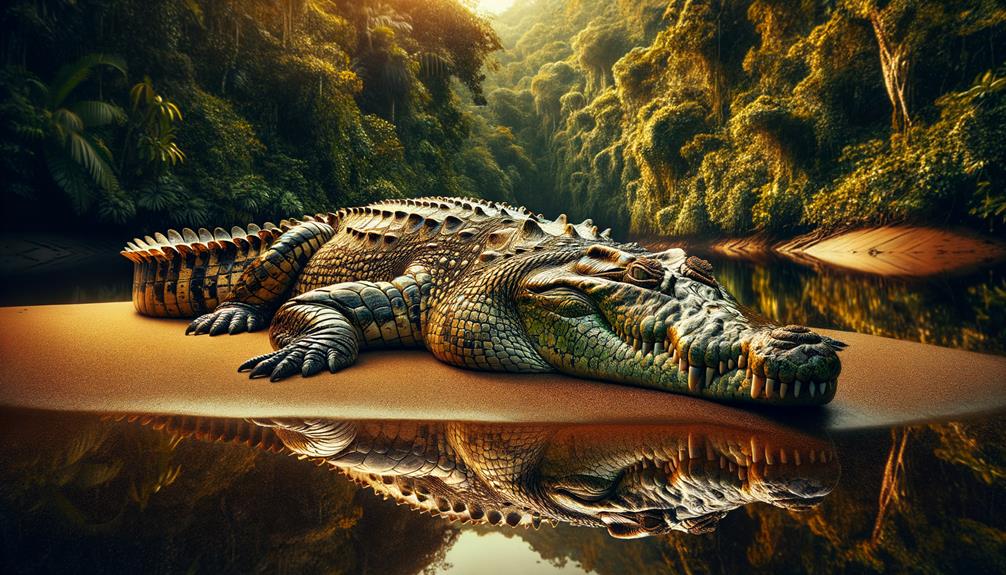I've always been drawn to reptiles that live an incredibly long time. Take the New Zealand tuatara, for instance – it can live over 100 years, thanks to its large genome and ability to regulate its body temperature. Giant tortoises, like those found on the Galapagos, can live even longer, exceeding 150 years, which is likely due to their slow metabolism. Crocodiles, particularly saltwater ones, can live up to 120 years, with some individuals, like Cassius, reaching that age in captivity. Sea turtles are also remarkable, with leatherback turtles living over a century. Even alligators can live up to 80 years. What's fascinating is that each of these species has unique characteristics that contribute to their remarkable longevity.
Key Takeaways
Reptiles With Extreme Lifespans
Tuatara are known for their remarkable longevity, often living over 100 years due to their slow growth rate and large genome. Giant tortoises, such as the Aldabra and Galapagos species, have been known to live up to 150 years or more in the wild. Nile crocodiles can reach lifespans of up to 100 years, while their saltwater cousins can live even longer, often exceeding 120 years. Sea turtles, including green and leatherback species, frequently live beyond 100 years, with other species averaging 50-80 years. American alligators and alligator snapping turtles also boast impressive lifespans, often reaching up to 80 years, with some individuals living even longer.
Longevity of Tuatara
Here's how tuatara, native to New Zealand, achieve remarkable lifespans that often exceed 100 years. This unique reptile species, which diverged from the lineage that led to snakes and lizards around 200 million years ago, has several fascinating adaptations that contribute to its longevity.
One key factor lies in their genome. Tuatara have an unusually large genome for a reptile, comprising 5 billion DNA base pairs, which includes genes linked to longevity and temperature tolerance. Their slow growth rate is another critical aspect. Unlike many other reptiles, tuatara continue growing throughout their lives, albeit at a slow pace, which correlates with their extended lifespan.
Natural selection has equipped them with the ability to thrive in cool temperatures. They possess numerous TRP genes, allowing them to maintain a preferred body temperature between 16-21°C, considerably lower than most reptiles. In addition, tuatara have a high count of genes involved in producing selenoproteins, which play a crucial role in reducing oxidative damage and promoting longevity. These genetic factors collectively help this ancient species survive for over a century, making them one of nature's long-lived marvels.
Giant Tortoises

Giant tortoises, like the Aldabra and Galapagos species, are fascinating creatures that can live up to 150 years or more, offering valuable insights into the biology of longevity. Some individuals, like Adwaita, are estimated to have lived an astonishing 255 years. Their slow metabolism and ability to efficiently eliminate damaged cells contribute to their remarkable lifespan.
Native to the Aldabra Atoll and Galapagos Islands, these gentle giants face significant threats, including habitat loss and introduced predators. As a result, several species are classified as endangered. Conservation efforts are crucial to protect these ancient reptiles, and without them, they might disappear. Wildlife conservation programs, particularly in New York and other global centers, are working to safeguard these incredible creatures.
One intriguing aspect of giant tortoises is their long reproductive life, which allows them to breed repeatedly over decades. This, combined with their slow growth, enables them to sustain their populations and live longer. Researchers study these remarkable reptiles to uncover the secrets of aging, hoping to apply their findings to human longevity. Understanding the lifespan of giant tortoises could ultimately lead to breakthroughs in our own quest for a longer and healthier life.
Ancient Crocodiles

Ancient crocodiles, with their remarkable lifespans and imposing physiques, offer a fascinating subject for understanding the secrets of longevity in reptiles. These creatures, closely related to both turtles and alligators, exhibit intriguing traits that researchers are only just beginning to understand. For example, Nile crocodiles can live up to 100 years, while American alligators in the United States often reach 30-50 years in the wild but can live up to 80 years in captivity. Their remarkable longevity sets them apart within the larger group of reptiles.
The Cuban crocodile, a critically endangered species, is notable for its maximum lifespan of over 70 years and impressive juvenile growth rates, reaching lengths of up to 10 feet. On the other hand, the saltwater crocodile, the largest living reptile, can grow up to 23 feet and live over 120 years. Cassius, the world's largest captive crocodile, is a testament to their extraordinary longevity, estimated to be around 120 years old.
New research into these remarkable lifespans can help protect these ancient reptiles by providing valuable insights into their growth rates and life history traits. By understanding these factors, conservation efforts can be more effective, ensuring these magnificent creatures continue to thrive for generations to come.
Sea Turtles

Sea turtles, with their remarkable longevity and intriguing life stories, offer a unique glimpse into the study of reptilian lifespans and marine biology. The green sea turtle, for instance, can live up to 80 years or more, with some individuals reaching the century mark, showcasing their remarkable resilience. Leatherback sea turtles, the largest species, have also been known to exceed 100 years, highlighting their extraordinary survival skills in the wild.
Loggerhead sea turtles, commonly found in Central and South America, typically live between 50-80 years but can surpass 100 years. Their adaptability is truly fascinating. Hawksbill sea turtles, with an average lifespan of 30-50 years, have been recorded living beyond 80 years. Meanwhile, Olive ridley sea turtles, despite their relatively shorter lifespan of 40-50 years, still provide valuable insights into marine biology.
As someone with a master's degree in Natural History, I find the longevity of these creatures captivating. Institutions like the Museum of Natural History and the National Museum hold critical data on these species. By studying sea turtles alongside creatures like the Aldabrachelys gigantea or the saltwater crocodile, we can gain a deeper understanding of extreme reptilian lifespans. The varied lifespans of sea turtles hold the key to unraveling the mysteries of marine and reptilian longevity.
Alligators and Snapping Turtles

With their remarkable longevity and unique ecological roles, alligators and snapping turtles offer fascinating insights into the resilience and adaptability of reptiles. The American alligator, one of the largest living reptiles, can grow up to 4.5 meters long and weigh around 1,000 pounds. These formidable animals are known for their remarkable lifespan, living up to 80 years in captivity. Muja, the oldest recorded alligator, is over 80 years old. But what contributes to their longevity? Their slow rates of aging and robust physiological features are key factors.
| Species | Average Lifespan (Wild) | Average Lifespan (Captivity) | Largest Recorded Length | Notable Facts |
|---|---|---|---|---|
| American Alligator | 30-50 years | 65-80 years | 4.5 meters | Successfully recovered from endangered status |
| Alligator Snapping Turtle | 20-70 years | 20-70 years | 0.75 meters | Largest freshwater turtle species in the U.S., faces threats |
In contrast, alligator snapping turtles, native to the southern United States, also exhibit long lives, with lifespans ranging from 20 to 70 years. Despite their durability, these turtles are vulnerable due to habitat loss and overharvesting. Their restricted geographic range and small population size make them a species of concern. The resilience of these animals highlights the need for conservation efforts to ensure these remarkable reptiles continue to thrive.
Both alligators and snapping turtles have evolved remarkable strategies to survive in their environments, making them valuable subjects for scientific study. By understanding these species, we can gain valuable insights into the natural world and our role in preserving it.
Frequently Asked Questions
What Reptile Has the Longest Lifespan?
The Aldabra giant tortoise holds the record for the longest-lived reptile, with some individuals living well over 150 years and possibly exceeding 200 years. Their remarkable longevity can be attributed to their slow metabolism and ability to survive on limited food and water resources.
What Animal Can Live up to 1000 Years?
Let's find an animal that lives up to 1000 years. Spoiler alert: it doesn't exist. But did you know that the glass sponge holds the record for longevity, with some living for over 11,000 years? That's a staggering number that puts any other contender to shame.
What Reptile Lives up to 100 Years?
The tuatara, a remarkable reptile native to New Zealand, has an incredible lifespan of over 100 years. As the last surviving member of the Rhynchocephalia order, its unusually large genome may hold the secret to its remarkable longevity.
Can a Lizard Live 75 Years?
Imagine a lizard living way beyond its expected lifespan; it's truly remarkable! While most lizards don't reach 75 years, the Tuatara, native to New Zealand, has been known to live well over 100 years, showcasing the remarkable longevity of some reptiles.



